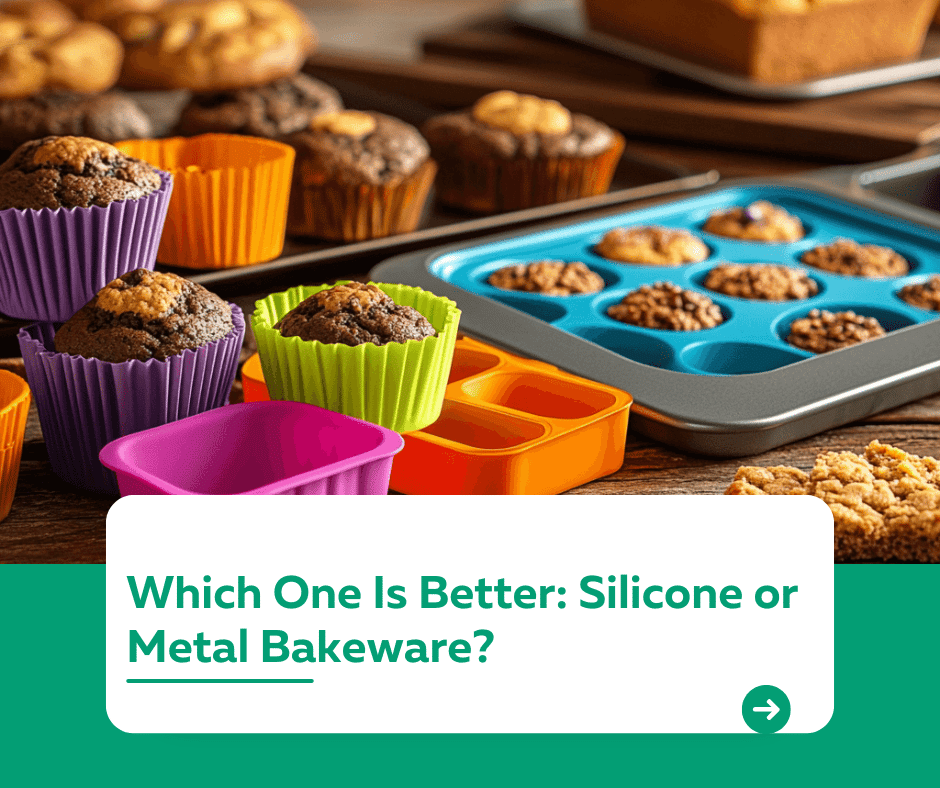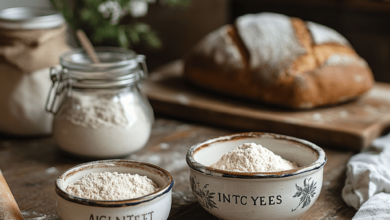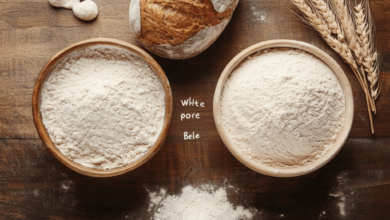Which One Is Better: Silicone or Metal Bakeware?

Introduction
“Which one is better: silicone or metal bakeware?”
Choosing the right bakeware is essential for baking success. With so many options available, silicone and metal bakeware are two of the most popular choices. Each has its advantages and ideal uses, but which one is better for your needs? In this article, we’ll compare silicone and metal bakeware in terms of performance, convenience, and versatility to help you decide.
1. Overview of Silicone Bakeware
Silicone bakeware is made from flexible, non-stick silicone material that’s becoming increasingly popular among home bakers.
- Advantages:
- Naturally non-stick, so no greasing is required.
- Flexible and easy to remove baked goods.
- Lightweight and easy to store.
- Heat resistant up to 428°F (220°C).
- Disadvantages:
- Can bend or warp when filled with heavy batter.
- May not distribute heat as evenly as metal.
Best Uses: Muffins, cupcakes, and lightweight desserts like mousse or gelatin molds.
2. Overview of Metal Bakeware
Metal bakeware, typically made from aluminum or stainless steel, is a staple in most kitchens.
- Advantages:
- Excellent heat conductivity for even baking.
- Sturdy and durable, suitable for heavy batters.
- Provides crisp, golden edges on baked goods.
- Disadvantages:
- Requires greasing or parchment to prevent sticking.
- Can rust if not cared for properly (depending on the material).
Best Uses: Cookies, cakes, pies, and roasted vegetables.
3. Silicone vs. Metal Bakeware: A Head-to-Head Comparison
- Heat Distribution:
- Metal: Superior heat conductivity for even baking.
- Silicone: Can result in uneven browning due to slower heat distribution.
- Non-Stick Properties:
- Metal: Needs greasing or parchment to prevent sticking.
- Silicone: Naturally non-stick and easy to clean.
- Durability:
- Metal: Long-lasting with proper care, but can warp under extreme heat.
- Silicone: Resistant to cracking or breaking but may lose shape over time.
- Versatility:
- Metal: Suitable for baking and high-heat roasting.
- Silicone: Ideal for lightweight desserts and recipes requiring flexibility.
4. Can You Substitute One for the Other?
While you can often use silicone and metal interchangeably, consider the following:
- Silicone Instead of Metal: Great for recipes requiring delicate handling, like custards or no-crust pies.
- Metal Instead of Silicone: Better for recipes that need even heat distribution, like cookies or bread.
Tip: Adjust baking times slightly if switching between materials, as heat distribution varies.
5. Which One Should You Choose?
- Choose Silicone If:
- You prioritize non-stick properties and easy cleanup.
- You bake lightweight desserts or need flexibility for unmolding.
- Choose Metal If:
- You need even heat distribution for consistent results.
- You bake heavier items or recipes requiring crispy edges.
Conclusion
Both silicone and metal bakeware have their strengths, making them valuable tools for different baking needs. Understanding their differences will help you make informed decisions for your kitchen. Whether you’re making delicate cupcakes or hearty loaves of bread, the right bakeware ensures perfect results every time.
For more baking tips and comparisons, visit our Kuestion.com.




